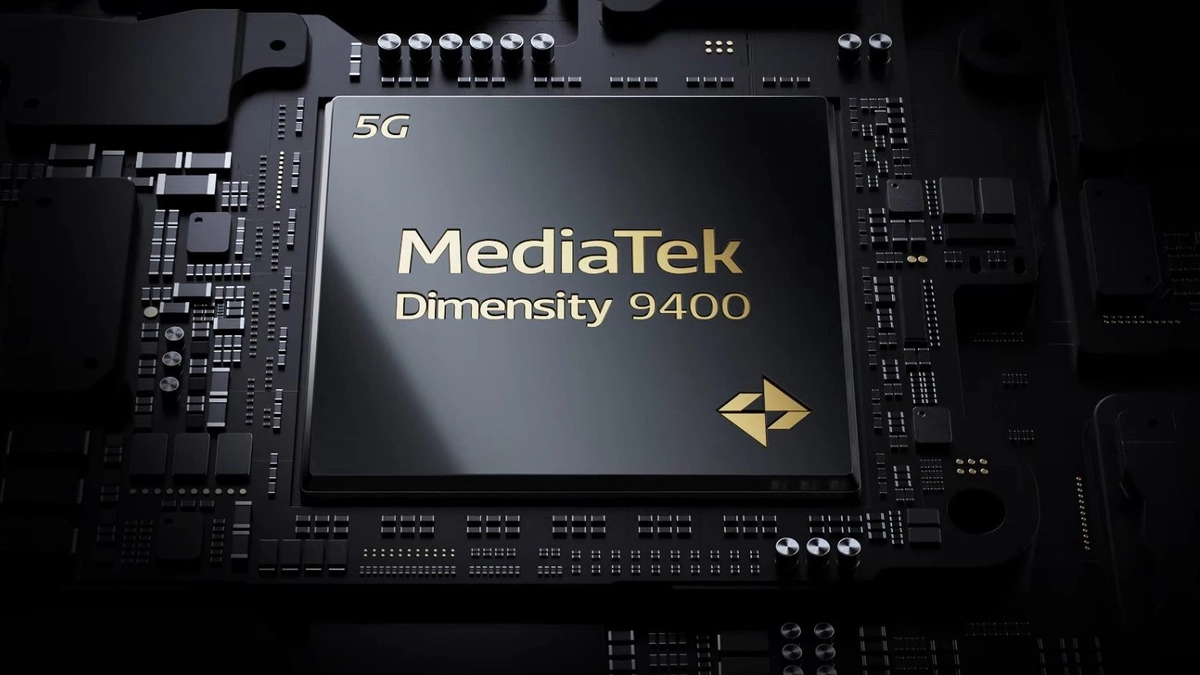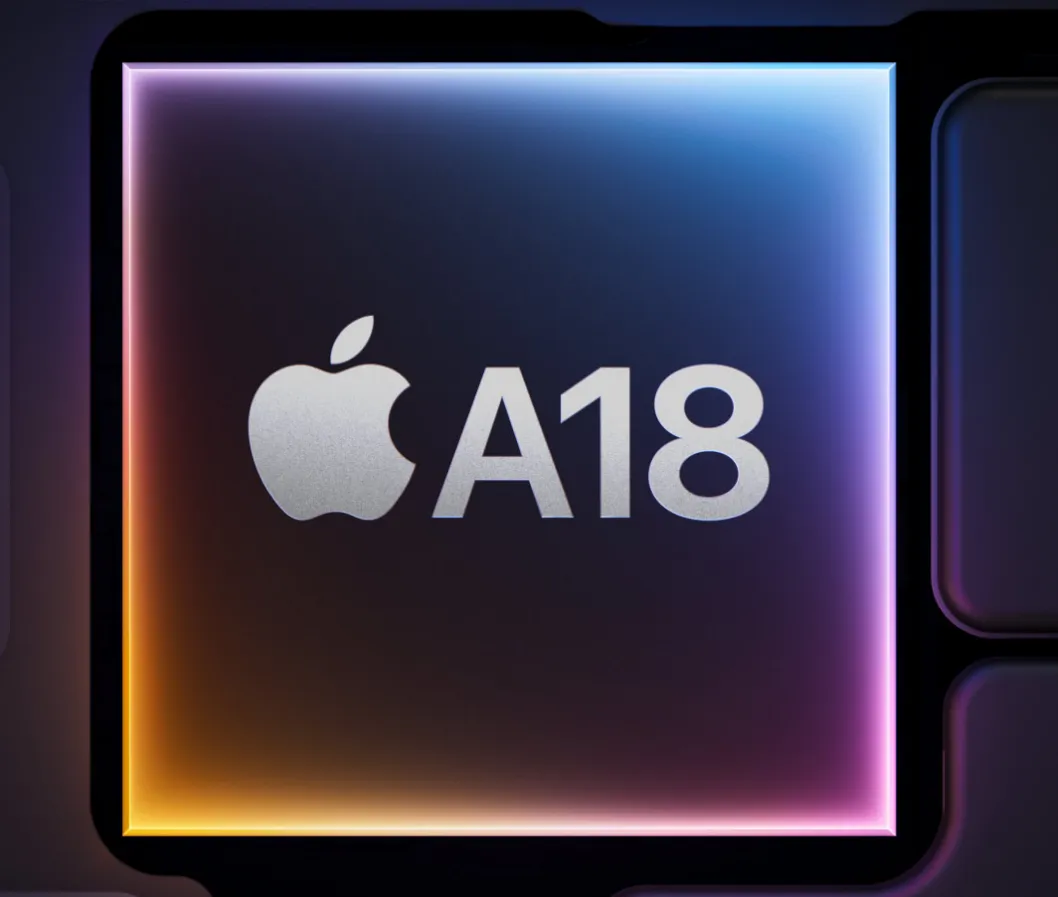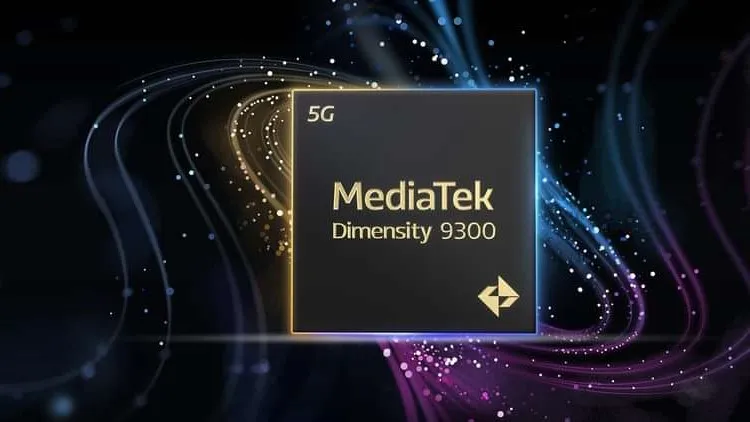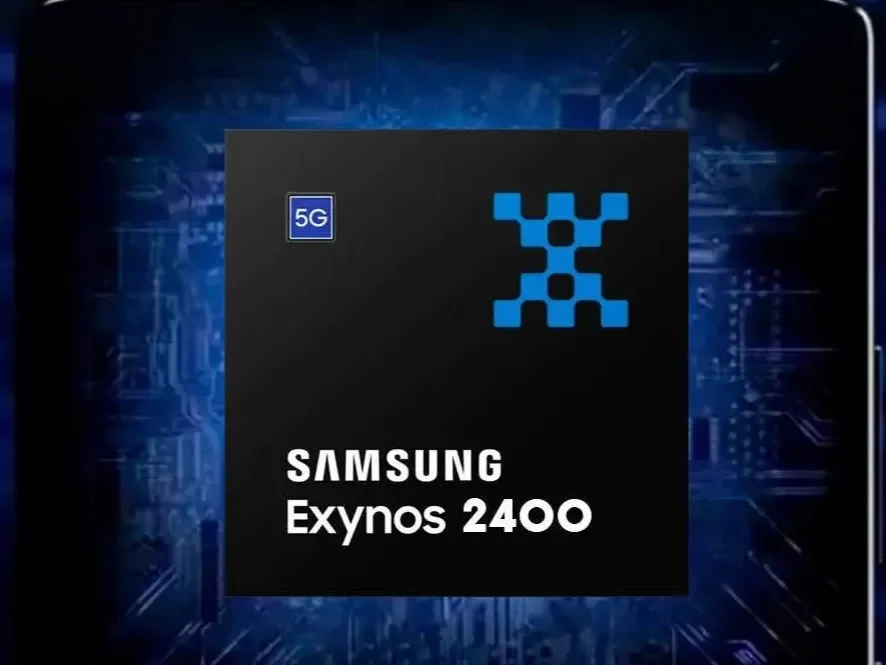10 Best Smartphone Chipsets (SoC) in 2025
In the world of smartphones, the SoC—better known as the chipset or chip—serves as the backbone of the device. It’s no surprise, then, that when a new smartphone is released, one of the first things people check is the chipset powering it. Are you among those who prioritize the chipset when choosing a new phone?
It’s perfectly reasonable to focus on the chipset before making a purchase. After all, the chipset is essentially the brain of the smartphone. A slow chipset will inevitably affect the overall performance of the device.
If you're looking for a smartphone with the best chipset, consider one equipped with one of the 10 chipsets featured in this list.
The rankings here are based on benchmark scores from tools like AnTuTu, as well as real-world user experiences with smartphones powered by these chipsets. While the list may not be absolute, it provides a good overview of the competitive landscape between chipsets.
Without further ado, here’s a look at the best smartphone chipsets of 2025, ranked by benchmark performance.
1. Snapdragon 8 Elite

Snapdragon 8 Elite is a powerhouse chipset, succeeding the Snapdragon 8 Gen 3 with significant performance improvements and cutting-edge features that redefine the mobile experience.
One of its standout upgrades is the adoption of TSMC's 3nm fabrication process, which delivers notable improvements in power efficiency and performance. With its new Oryon CPU architecture, the Snapdragon 8 Elite offers unmatched speed and responsiveness.
Qualcomm has also enhanced the AI capabilities of this chipset, paving the way for a more personalized and intuitive user experience.
Interestingly, Qualcomm chose to rebrand this chip as the "Snapdragon 8 Elite" instead of Snapdragon 8 Gen 4, reflecting the architectural changes introduced with Oryon, which is also featured in laptops under the Snapdragon X Elite name.
This chipset is equipped with six high-performance cores clocked at up to 3.53 GHz. Interestingly, Qualcomm has omitted efficiency cores, opting instead for a design tailored to modern application workloads. This decision emphasizes the need for performance cores in delivering optimal results for today’s demanding tasks.
The Snapdragon 8 Elite also has an upgraded Adreno GPU, delivering up to 20% better graphics performance compared to its predecessor. This ensures seamless gaming experiences, even with graphically demanding titles at maximum settings.
Flagship smartphones like the iQOO 13 were among the first to adopt this chipset, featuring impressive specs such as a 144Hz AMOLED display, a 6,150mAh battery with 120W fast charging, and advanced cooling technology.
Other smartphones rumored to feature the Snapdragon 8 Elite include the Asus ROG Phone 9 and the Nubia Z70 Ultra, adding more heat to the high-end smartphone market.
Benchmark Performance
On the AnTuTu Benchmark, the Snapdragon 8 Elite achieved an impressive score of 3,025,991, outperforming the Apple A18 Pro in the iPhone 16 Pro Max, which scored 2.7 million.
In Geekbench tests, the Snapdragon 8 Elite continued to shine with a single-core score of 3,260 and a multi-core score of 10,051. This represents nearly a 50% performance boost compared to its predecessor, the Snapdragon 8 Gen 3.
This leap in performance is closely tied to the enhanced AI Engine embedded in the chipset, enabling faster, more efficient data processing. The improved AI capabilities enhance everything from photo and video quality to app and gaming performance, setting a new benchmark for mobile innovation.
As a tech enthusiast, I admire Qualcomm’s relentless innovation. The Snapdragon 8 Elite exemplifies their commitment to pushing the boundaries of mobile performance.
With its cutting-edge technology and exceptional capabilities, the Snapdragon 8 Elite sets a new standard for flagship chipsets in 2025 and beyond.
2. Dimensity 9400

The Dimensity 9400 is built using TSMC's second-generation 3nm process, which offers better performance and efficiency compared to the previous generation. The smaller size of this fabrication allows more transistors to fit inside the chip, improving speed while using less power.
The CPU of the Dimensity 9400 has eight cores in a 1+3+4 configuration. It includes one high-performance Cortex-X925 core at 3.62 GHz, three Cortex-X4 cores at 3.3 GHz, and four Cortex-A720 efficiency cores at 2.4 GHz.
This combination provides strong performance while keeping power consumption efficient for daily use. The Cortex-X925 core also improves single-core performance that can make the device faster and more responsive.
For graphics, the Mali-G925 Immortalis MP12 GPU is included, running at 1.6 GHz. It supports hardware ray tracing, which helps create more realistic and detailed graphics, making games and media look better.
The Dimensity 9400 also improves memory and storage performance. It supports LPDDR5X RAM with speeds up to 10.7 Gbps, making it one of the fastest memory types available today.
The L2 cache has doubled, and the L3 cache has increased by 50%, improving speed and data transfer. These enhancements allow apps and games to load faster and run more smoothly.
The chipset's AI capabilities have also been upgraded. It has an AI Processing Unit (APU) that is faster and more efficient, helping with image recognition, natural language processing, and video or photo enhancement. This makes the device smarter and able to provide a more personalized experience.
In benchmark tests, the Dimensity 9400 scores over 2.9 million on AnTuTu Benchmark v10, which is higher than many competing chipsets. It also does well in Geekbench tests for both single-core and multi-core performance. In AI benchmark tests, the chipset shows strong results, proving its excellent AI processing power.
While the Dimensity 9400 is not as powerful as the Snapdragon 8 Elite, it has advantages in GPU performance and AI capabilities. Some sources also mention that it performs better in floating-point calculations and graphics rendering, while supporting more advanced AI applications.
The iQOO Neo 10 Pro, OPPO Find X8, OPPO Find X8 Pro, vivo X200, and vivo X200 Pro are some of the smartphones that use the Dimensity 9400. These devices benefit from the chipset’s powerful performance and energy efficiency to ensure a fast and smooth user experience.
3. Apple A18 Pro

The A18 Pro is the powerhouse behind the iPhone 16 Pro and iPhone 16 Pro Max, succeeding the A17 Pro found in the iPhone 15 Pro series. With major upgrades in CPU, GPU, and Neural Engine, the A18 Pro delivers a smoother experience, from high-performance gaming to smarter AI capabilities.
One of the key improvements in the A18 Pro is TSMC's second-generation 3nm fabrication process, which allows transistors to be packed more densely. This leads to better performance and energy efficiency compared to its predecessor.
In terms of speed, the A18 Pro is up to 15% faster in CPU performance and 20% faster in GPU performance than the A17 Pro. Additionally, it is more power-efficient, contributing to better battery life in the iPhone 16 Pro series.
Early reviews of the iPhone 15 Pro series noted decent battery life, and the iPhone 16 Pro series improves on this without sacrificing performance.
The A18 Pro features a 6-core CPU with 2 high-performance cores and 4 energy-efficient cores. However, what sets it apart is its higher clock speed compared to the standard A18 chip.
The 6-core GPU in the A18 Pro has also been upgraded with a more efficient architecture, enabling the iPhone 16 Pro series to handle demanding games at maximum settings and deliver stunning AR/VR experiences.
Beyond CPU and GPU enhancements, the A18 Pro boasts a 16-core Neural Engine, capable of processing 35 trillion operations per second.
This significantly improves AI-driven features, such as more accurate Live Translate, faster voice recognition, and enhanced AI-powered photography effects.
Performance benchmarks also highlight the A18 Pro’s power. On AnTuTu v10, it achieves an impressive 1.7 million points, while on Geekbench, it scores 3,200 in single-core and 7,800 in multi-core tests. These figures mark a significant leap from the A17 Pro, reinforcing its superior AI and overall processing power.
4. Apple A18

The Apple A18 powers the iPhone 16 and iPhone 16 Plus, which were launched in September 2024. As the successor to the A16 Bionic, it brings notable improvements in performance and power efficiency. However, compared to the A18 Pro, the A18 is considered a slightly lower-tier version.
Despite not matching the Pro variant’s speed, the A18 is still powerful enough to handle demanding applications and games smoothly. Like most iPhones, it offers fast and stable performance with minimal lag.
The A18 is built on TSMC’s 3nm fabrication process, similar to the A18 Pro. This advanced manufacturing technology allows for greater efficiency and better power management.
Compared to the A16 Bionic, the A18 boasts 30% faster CPU performance while consuming 30% less power, contributing to longer battery life in the iPhone 16 series.
Architecturally, the A18 and A18 Pro are quite similar, featuring the same CPU core count. The key difference lies in the GPU—while the A18 Pro has a 6-core GPU, the A18 comes with a 5-core GPU. This results in slightly lower graphics performance, but general processing power remains strong.
Another key difference is that the A18 Pro supports premium features such as ProMotion (adaptive refresh rate up to 120Hz), Always-On Display, and ProRes video recording, which are not available on the A18.
To measure real-world performance, synthetic benchmark tests were conducted. On AnTuTu v10, the A18 scored around 1.5 million points, while in Geekbench, it achieved 3,000 points in single-core and 7,000 in multi-core tests. These results show a significant improvement over the A16 Bionic.
The A18's AI capabilities are also impressive. Equipped with a 16-core Neural Engine, it processes 16 trillion operations per second, enhancing AI-driven functions such as facial recognition, natural language processing, and camera optimization.
5. Apple A17 Pro

Apple decided to drop the “Bionic” name from the SoC used in the iPhone 15 Pro and iPhone 15 Pro Max, now calling it the Apple A17 Pro. This is the world’s first SoC made using 3 nm fabrication by TSMC (Taiwan Semiconductor Manufacturing Company).
With this SoC, Apple aims to provide a better gaming experience than the Apple A16 Bionic. According to the company, the Apple A17 Pro has 20% better graphics processing compared to the Apple A16 Bionic.
The CPU performance has also been improved, but only by 10%. There are other improvements in AI processing, with the neural engine now twice as fast, and in ray tracing capabilities, which are four times faster. These enhancements come from using newer fabrication techniques and updated SoC components.
The CPU configuration of the Apple A17 Pro remains the same as its predecessor, featuring six CPU cores. It has two performance cores and four efficiency cores.
When the iPhone 15 Series was launched, Apple didn’t specify the chipset’s CPU clock speeds. However, the CPU Monkey website lists the performance cores at 3.7 GHz and the efficiency cores at 2.2 GHz.
The boost in graphics processing comes from an increase in GPU cores from 5 to 6. According to CPU Monkey, the GPU clock speed for this chip is 0.7 GHz.
As for ray tracing, the speed improvement is due to the GPU handling it now (hardware-based), unlike the Apple A16 Bionic, which relied on software for ray tracing.
GeekBench 6 scores on CPU Monkey show the Apple A17 Pro achieving 2,788 points in single-core tests and 6,845 points in multi-core tests.
6. Dimensity 9300+

The Dimensity 9300+ is built on TSMC’s 4nm process, promising better power efficiency. It features an octa-core setup with one Cortex-X4 core at 3.4 GHz, three Cortex-X4 cores at 2.85 GHz, and four Cortex-A720 cores at 2.0 GHz.
For graphics, the Dimensity 9300+ uses the Immortalis-G720 MC12 GPU, which is said to provide excellent visuals and high frame rates, even in demanding games. It also supports LPDDR5T RAM with speeds up to 8,533 Mbps and UFS 4.0 storage, allowing for fast data access.
One standout feature of the Dimensity 9300+ is its AI capabilities. It comes with an APU 790, which supports advanced AI features like image quality enhancement, facial recognition, and real-time translation.
The APU 790 is also designed to offer a more responsive and intelligent gaming experience. With its strong AI performance, the Dimensity 9300+ promises a more personalized and intuitive mobile experience.
In terms of real-world performance, some devices like the vivo X100s and iQOO Neo 9S Pro already use the Dimensity 9300+ and have shown impressive results.
In benchmark tests, for instance, the vivo X100s scored around 2.2 million points on AnTuTu, and on Geekbench, it reached 2,213 points in single-core and 7,274 points in multi-core tests.
The Dimensity 9300+ is also found in tablets like the Samsung Galaxy Tab S10+ and Samsung Galaxy Tab S10 Ultra. The scores on these devices are similar. For example, the Samsung Galaxy Tab S10 Ultra scored nearly 2 million (1,915,682) on AnTuTu v10, according to Digit.
Trusted Reviews reported that the Galaxy Tab S10 Ultra achieved 2,155 points in single-core and 7,092 points in multi-core. These results make the Dimensity 9300+ one of the fastest chipsets in 2024.
Compared to the standard Dimensity 9300, the 9300+ has a higher clock speed for its top Cortex-X4 core, boosted from 3.25 GHz to 3.4 GHz.
This increase is expected to improve single-thread performance and create a smoother gaming experience. Additionally, the Dimensity 9300+ features better GPU and AI optimizations, which contribute to its overall superior performance.
7. Snapdragon 8 Gen 3

Qualcomm introduced the Snapdragon 8 Gen 3 in the fourth quarter of 2023. The first phone in Indonesia to feature this SoC was the iQOO 12. Structurally, the Snapdragon 8 Gen 3 comes with a CPU configured in a 1+5+2 setup.
It consists of one Cortex X4 prime core (3.3 GHz), five Cortex A720 performance cores (three at 3.15 GHz and two at 2.96 GHz), and two Cortex A520 efficiency cores (2.27 GHz).
Compared to its predecessor, the Snapdragon 8 Gen 2, this model includes one additional performance core but one fewer efficiency core.
The chipset also integrates an Adreno 750 GPU (two cores, 770 MHz), a Hexagon AI processor, a Spectra image processor, and a built-in 5G modem. It supports advanced technologies such as ray tracing, hardware-accelerated AVI codecs, WiFi 7, and Bluetooth 5.4.
Enhancing the gaming experience, the Snapdragon 8 Gen 3 supports refresh rates of up to 240 Hz, allowing games to run smoothly at frame rates of up to 240 FPS.
With this configuration, Qualcomm claims the Snapdragon 8 Gen 3 delivers both improved performance and better efficiency. However, it still uses TSMC’s 4 nm manufacturing process.
In terms of raw performance, the CPU sees a 30% boost, while efficiency improves by 20%. The GPU also shows a 25% increase in both performance and efficiency.
Benchmark tests conducted by GSMArena show impressive results. On GeekBench 6, the Snapdragon 8 Gen 3 scored 2,277 in the single-core test and 6,953 in the multi-core test. Meanwhile, its AnTuTu scores were 2,107,464 on AnTuTu 10 and 1,574,344 on AnTuTu 9.
8. Dimensity 9300

MediaTek launched the Dimensity 9300 in the fourth quarter of 2023, positioning it as a successor to the Dimensity 9200 and a direct competitor to the Snapdragon 8 Gen 3. The vivo X100 Pro was the first smartphone to feature this SoC.
In an unconventional move, MediaTek eliminated the efficiency cores in the Dimensity 9300’s CPU design. Instead, it features four Cortex X4 super cores (one at 3.25 GHz and three at 2.85 GHz) and four Cortex A720 performance cores (2.0 GHz).
Supporting components include a 12-core Immortalis-G720 MC12 GPU (1.3 GHz), a MediaTek APU 790 AI processor, a MediaTek Imagiq 990 ISP, and an integrated 5G modem. Like the Snapdragon 8 Gen 3, the Dimensity 9300 is also built on TSMC’s 4 nm process.
This SoC supports UFS 4.0 storage and LPDDR5T RAM while incorporating the latest technologies, including ray tracing, WiFi 7, and Bluetooth 5.4.
The lack of efficiency cores initially raised concerns about power consumption and potential throttling. However, MediaTek claims that the CPU's multi-core efficiency has improved by 33%, while performance has increased by 40%. GPU performance has also surged by 46%, alongside a 40% efficiency boost.
Thermal management tests conducted by GSMArena on the vivo X100 Pro showed promising results. In a one-hour CPU Throttling Test, the CPU maintained 73% of its peak performance, suggesting effective heat management. However, the phone’s thermal design likely played a role in these results.
Benchmark scores further reinforce the Dimensity 9300’s capabilities. On GeekBench 6, it recorded 2,192 for single-core performance and 7,343 for multi-core. Meanwhile, on AnTuTu 10, it achieved 2,104,997.
9. Apple A16 Bionic

The Apple A15 Bionic, the powerhouse behind the iPhone 13 series, remained unrivaled even a year after its release in 2021. In 2022, despite the emergence of several high-end Android chipsets, none could surpass its performance.
However, the true successor to the A15 Bionic came from Apple itself—the A16 Bionic. This chip boasts faster data processing capabilities, enhanced GPU performance, and improved AI technology for superior photo processing.
Structurally, the A16 Bionic retains a six-core CPU like its predecessor. It features two high-performance Everest cores clocked at 3.46 GHz and four Sawtooth efficiency cores running at 2.02 GHz.
Manufactured using TSMC’s 4 nm process, the A16 Bionic outperforms its predecessor in various benchmarks. This isn’t surprising, given that the A15 Bionic was built on a 5 nm process and contained around 16 billion transistors.
The A16 Bionic powers the iPhone 14 Pro and iPhone 14 Pro Max, which launched alongside the iPhone 14 and iPhone 14 Plus in 2022.
However, the standard iPhone 14 and iPhone 14 Plus still rely on the A15 Bionic, just like the iPhone 13 series. The key difference is that the A15 Bionic in these models features a five-core GPU, whereas the iPhone 13 series had only four GPU cores.
Performance benchmarks confirm the A16 Bionic’s superiority. According to AnTuTu.com, the chip scores 944,324. Meanwhile, Geekbench 6 results for the iPhone 14 Pro show a single-core score of 2,502 and a multi-core score of 6,298.
10. Exynos 2400

The Exynos 2400 is built on Samsung Foundry's 4nm EUV process. Its CPU features a deca-core architecture, consisting of one Cortex-X4 core clocked at 3.2 GHz, two Cortex-A720 cores at 2.9 GHz, three Cortex-A720 cores at 2.6 GHz, and four Cortex-A520 cores at 2.0 GHz. This configuration delivers up to 1.7 times the performance of its predecessor, the Exynos 2200.
In terms of graphics, the Exynos 2400 is equipped with the Xclipse 940 GPU, based on AMD's RDNA 2 architecture. This GPU significantly boosts graphics performance, particularly in ray tracing.
Samsung claims the Xclipse 940 delivers twice the performance of the GPU in the Exynos 2200, a claim supported by real-world benchmarks showing improved performance in devices using this chip.
The Exynos 2400 also features an advanced ISP and NPU. Its ISP supports 8K video recording at 60fps and can process photos with resolutions up to 320 MP.
Meanwhile, the NPU enhances AI-driven features such as natural language processing, object recognition, and image quality optimization, ensuring a more personalized and intuitive user experience.
So how does the Exynos 2400 fare in synthetic benchmarks? According to NanoReview, it achieves an AnTuTu 10 score of 1,658,438.
On Geekbench 6, it scores 2,203 in single-core and 7,019 in multi-core performance. These results position the Exynos 2400 among the top flagship chipsets, competing with the Snapdragon 8 Gen 3 and Dimensity 9300.
The Exynos 2400 powers the Samsung Galaxy S24 and S24+ in select markets, including Europe and Southeast Asia. Samsung also offers a variant called the Exynos 2400e, used in the Galaxy S24 FE. While it shares the same CPU and GPU configuration as the standard Exynos 2400, the 2400e operates at a slightly lower clock speed.
If you're looking for a high-performance smartphone, consider one equipped with one of these top-tier chipsets.
